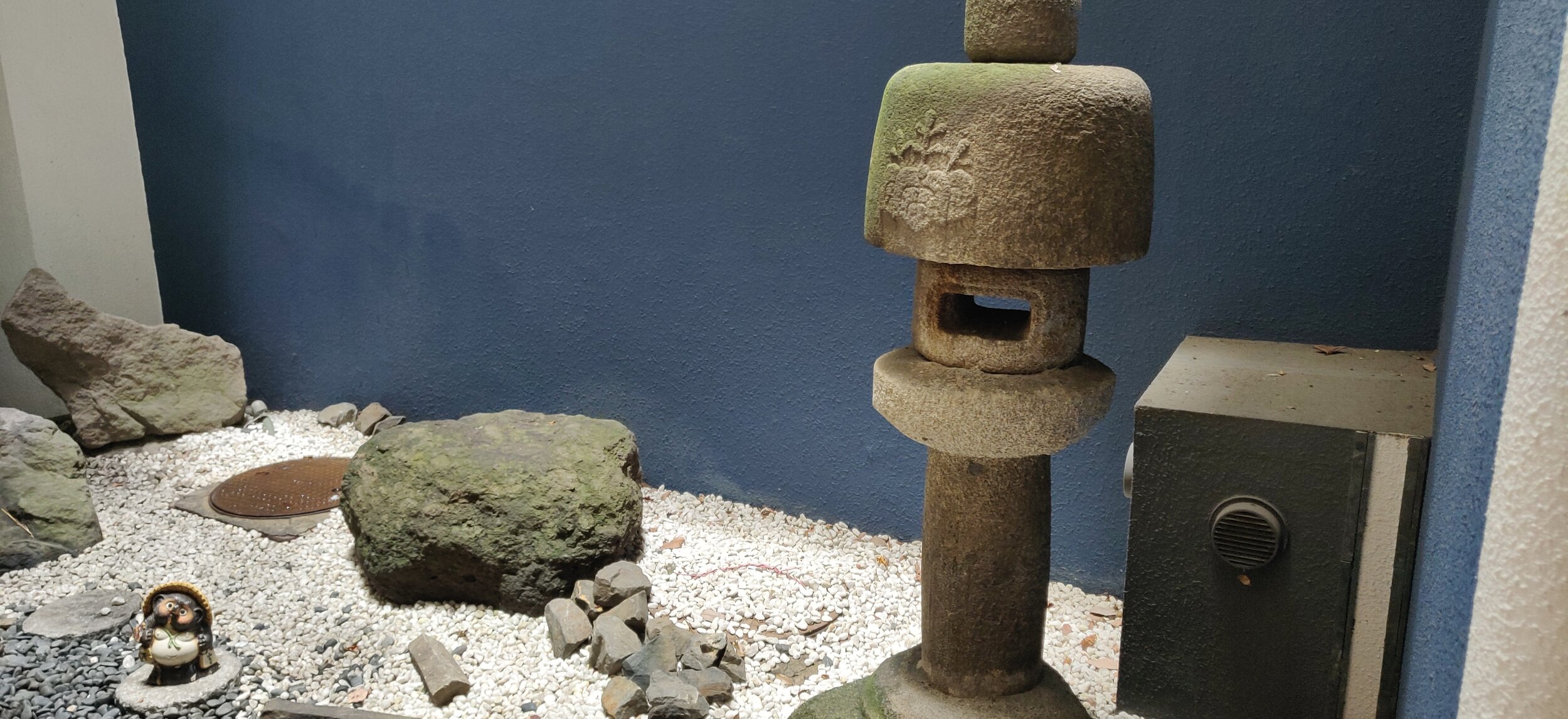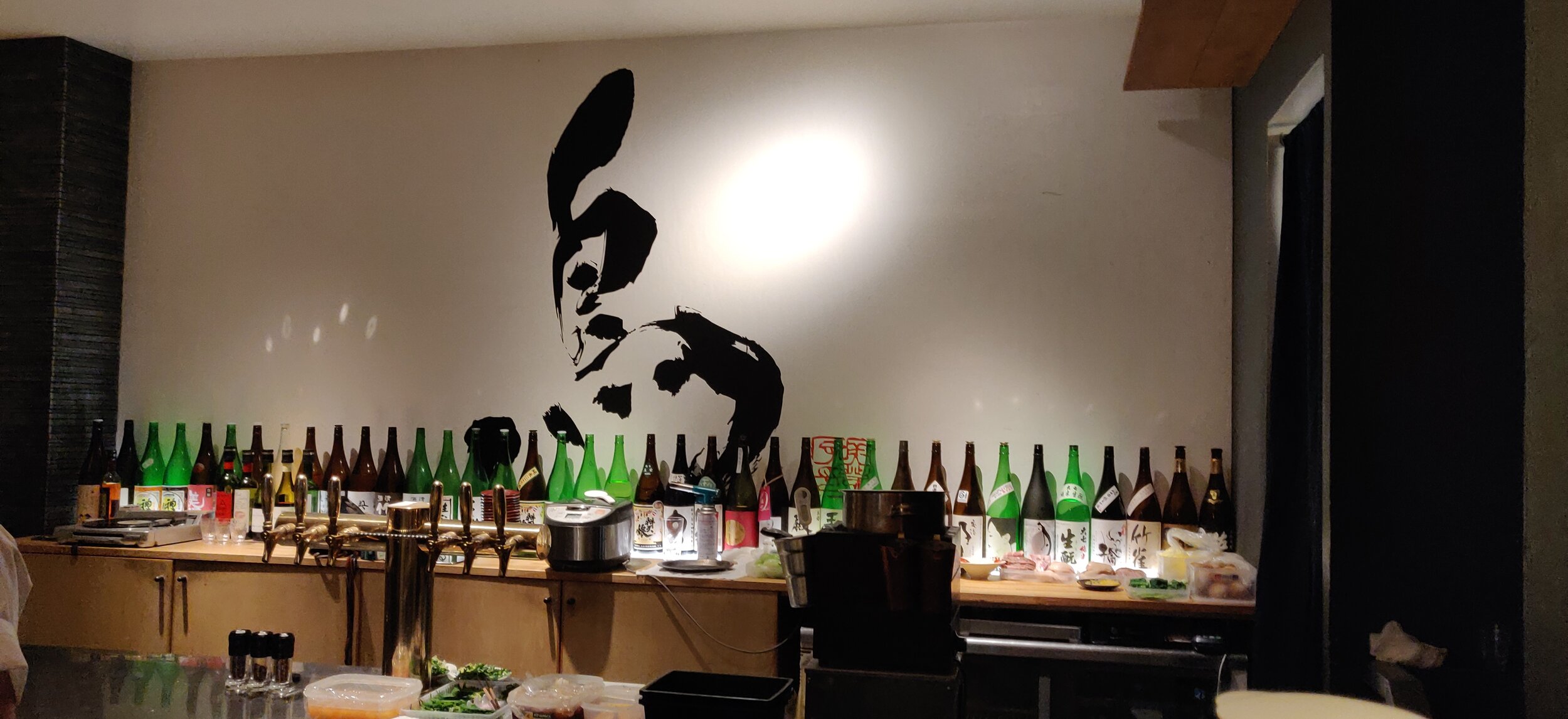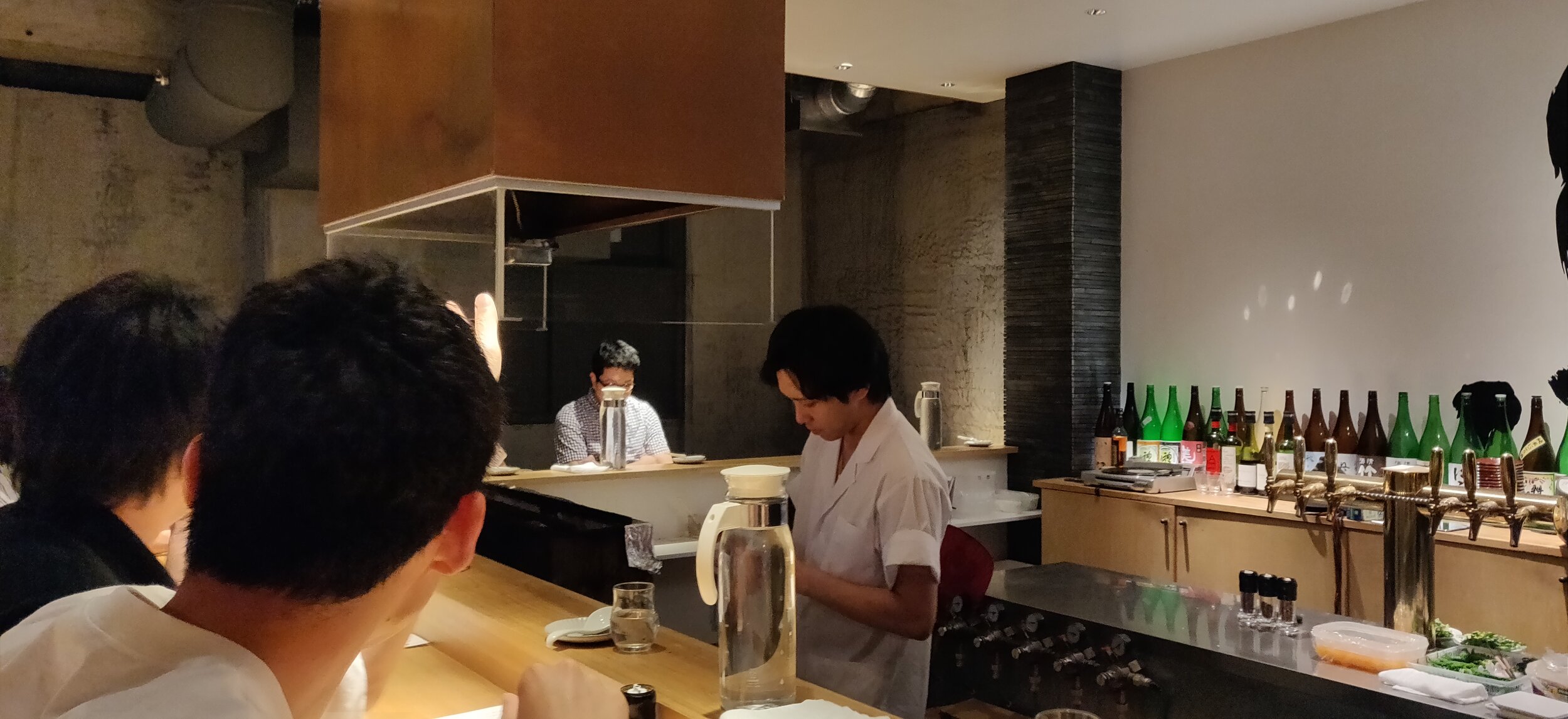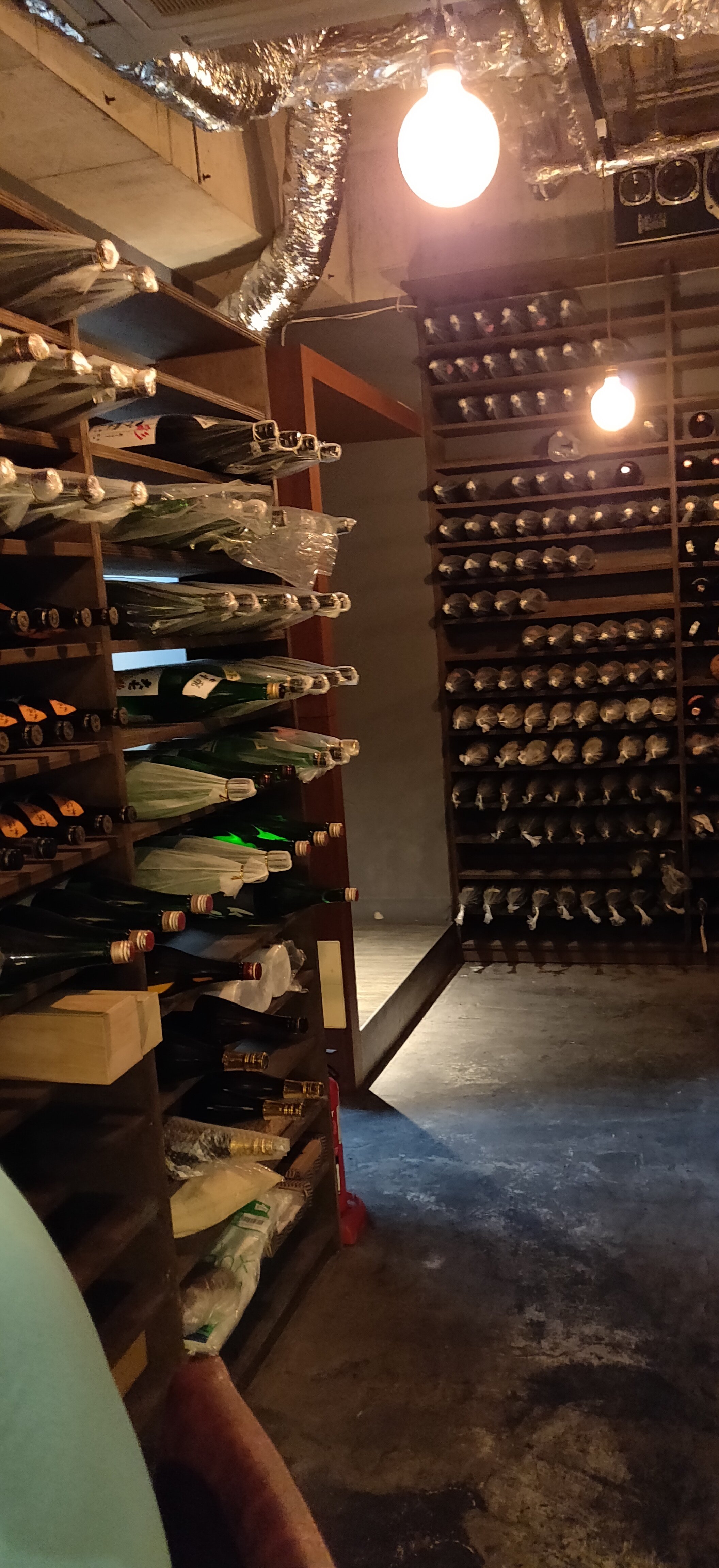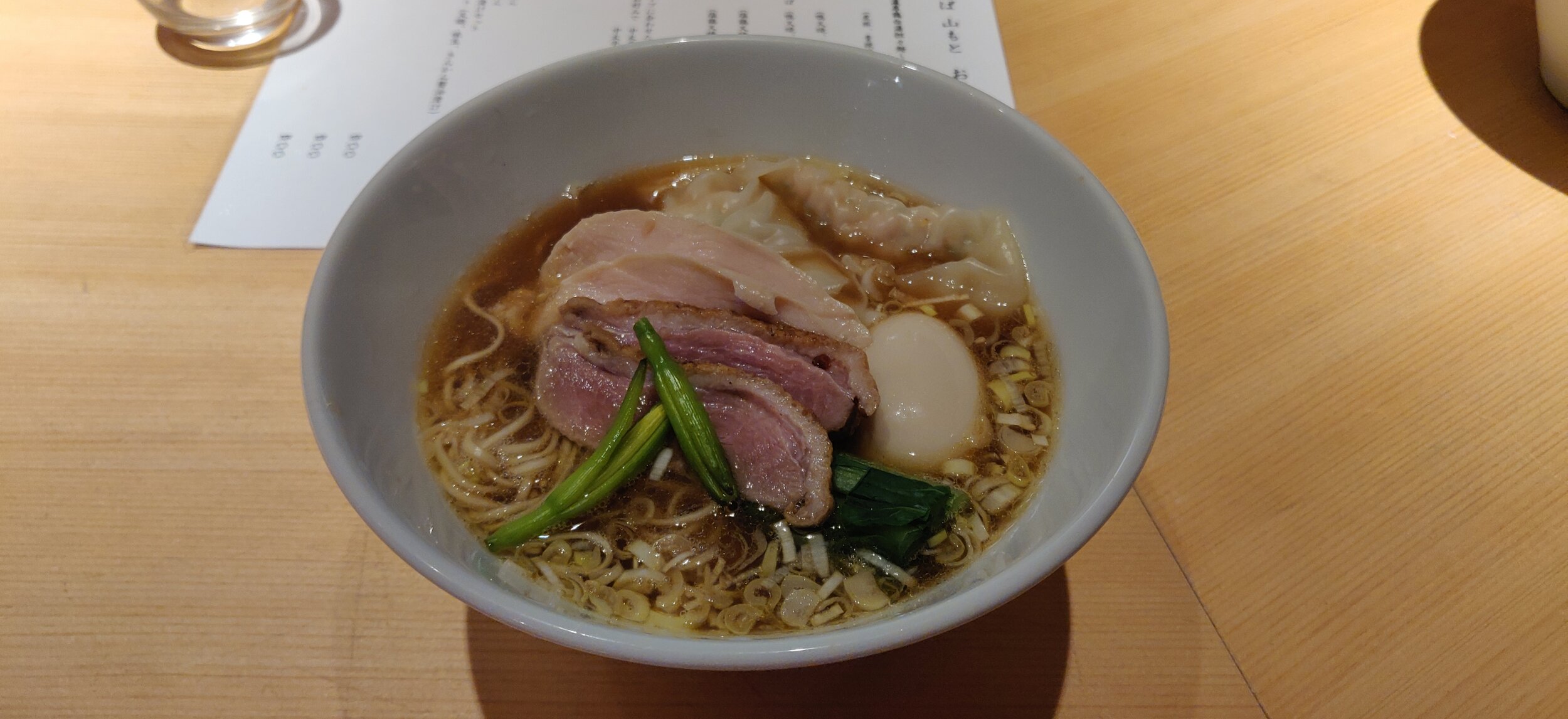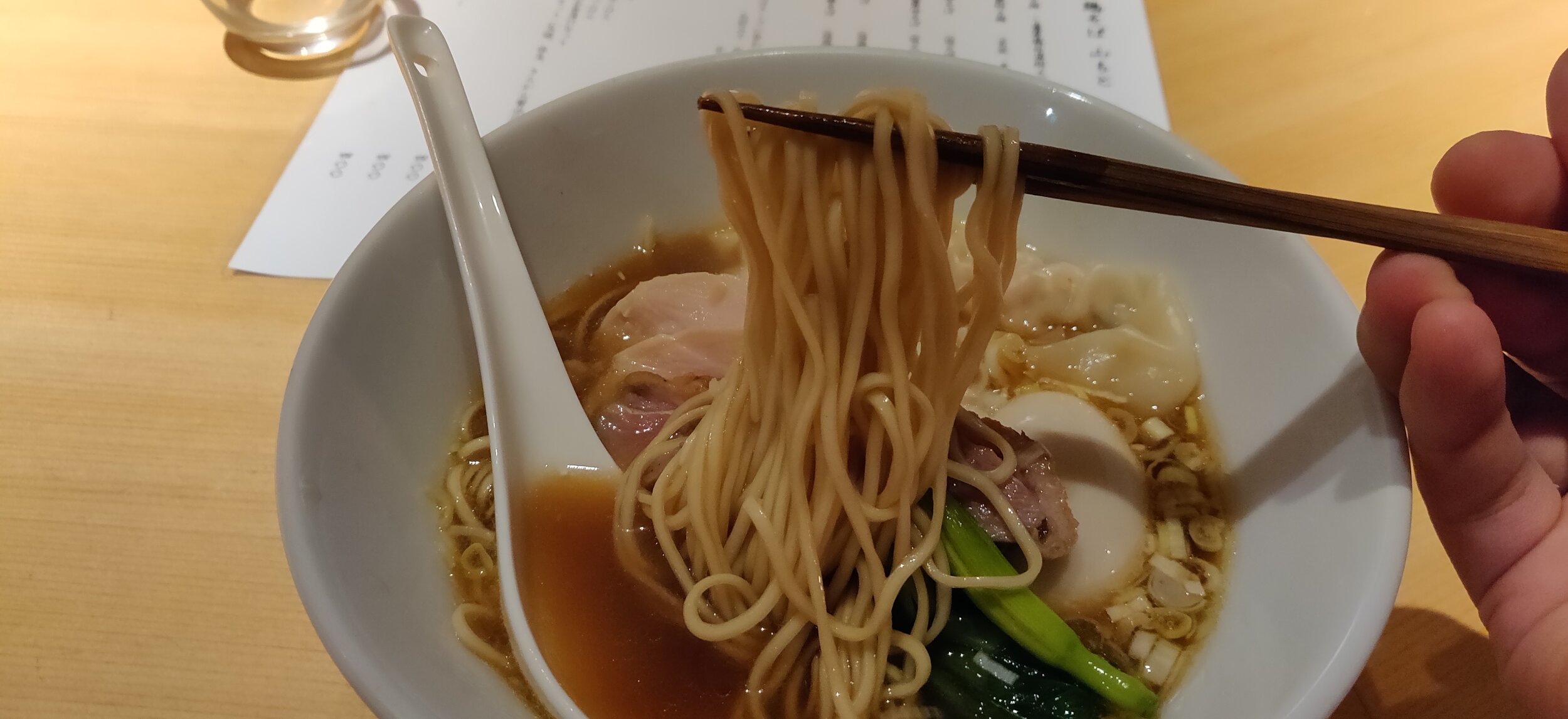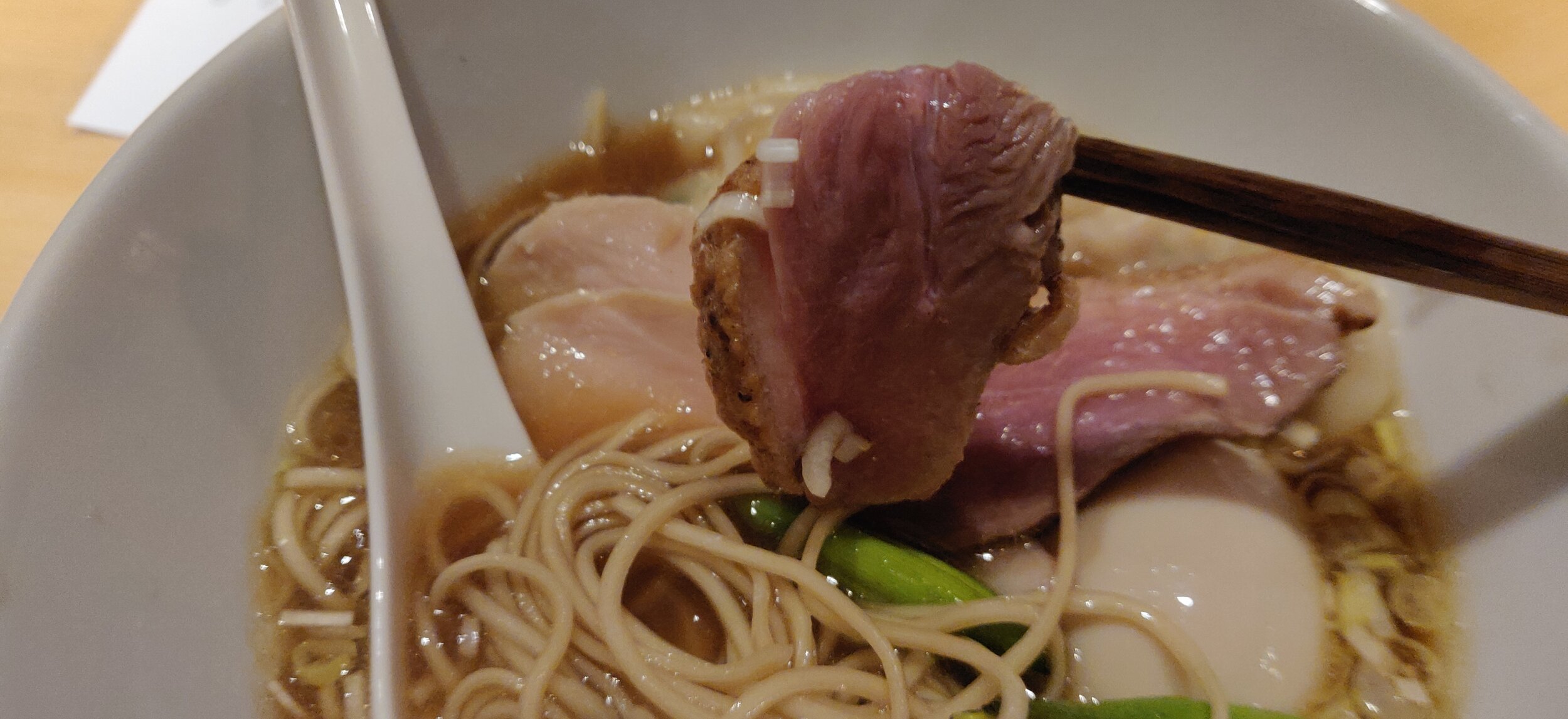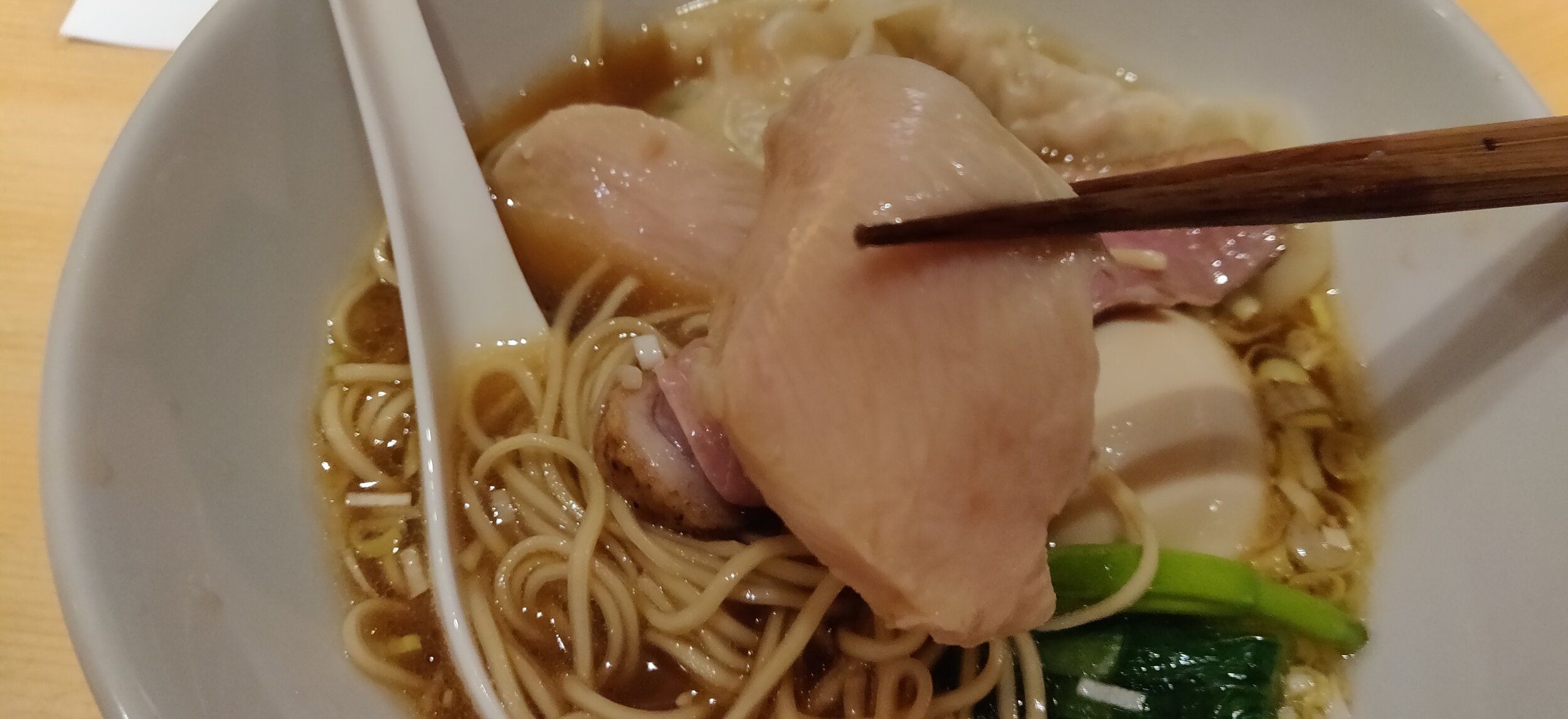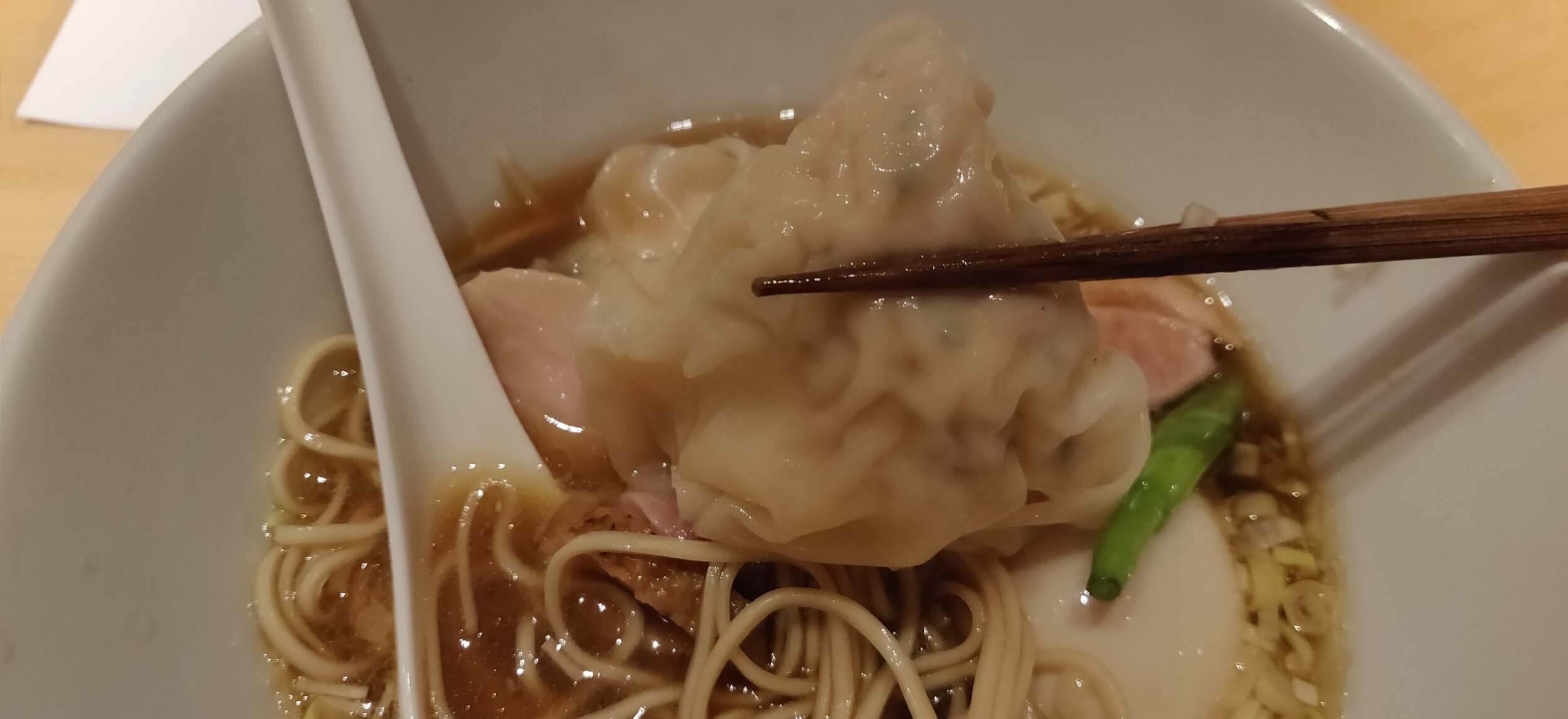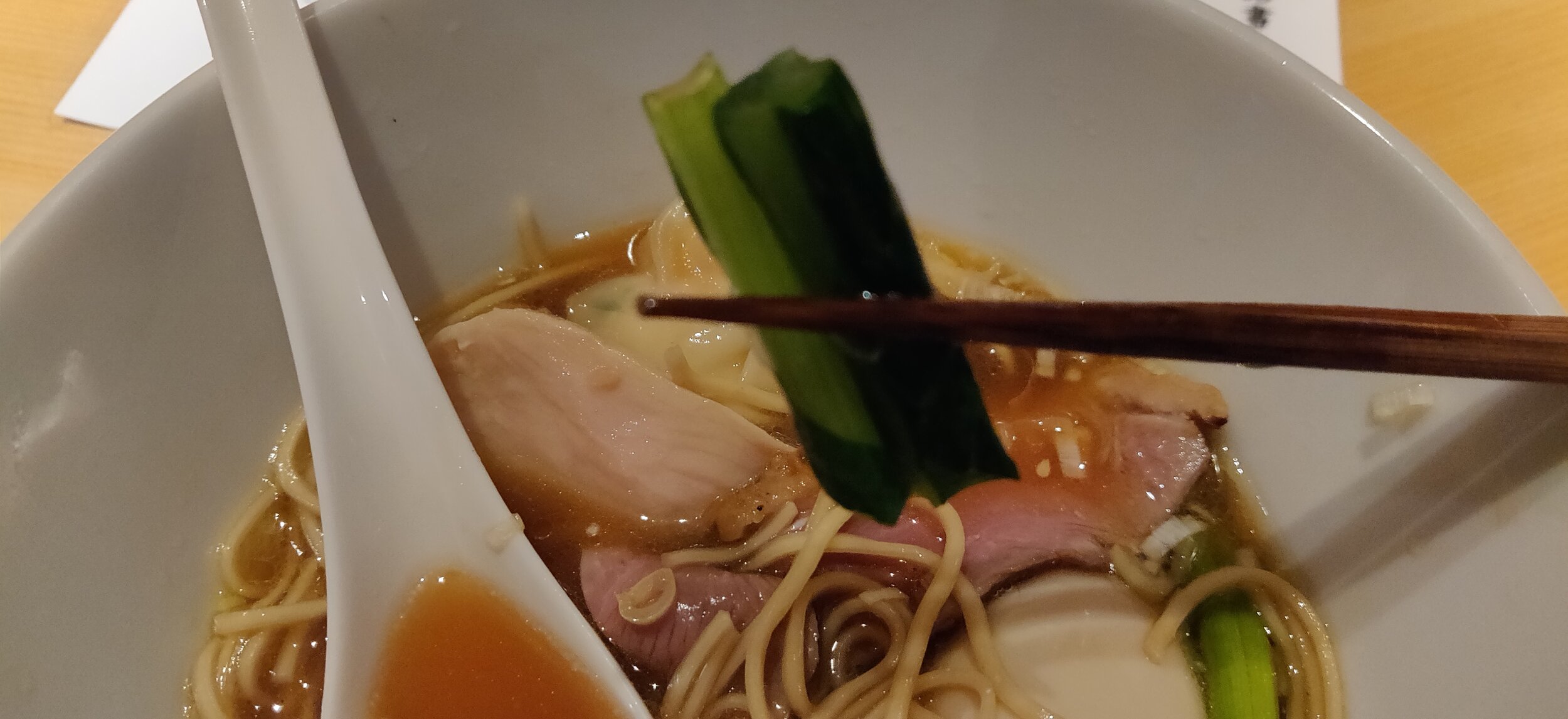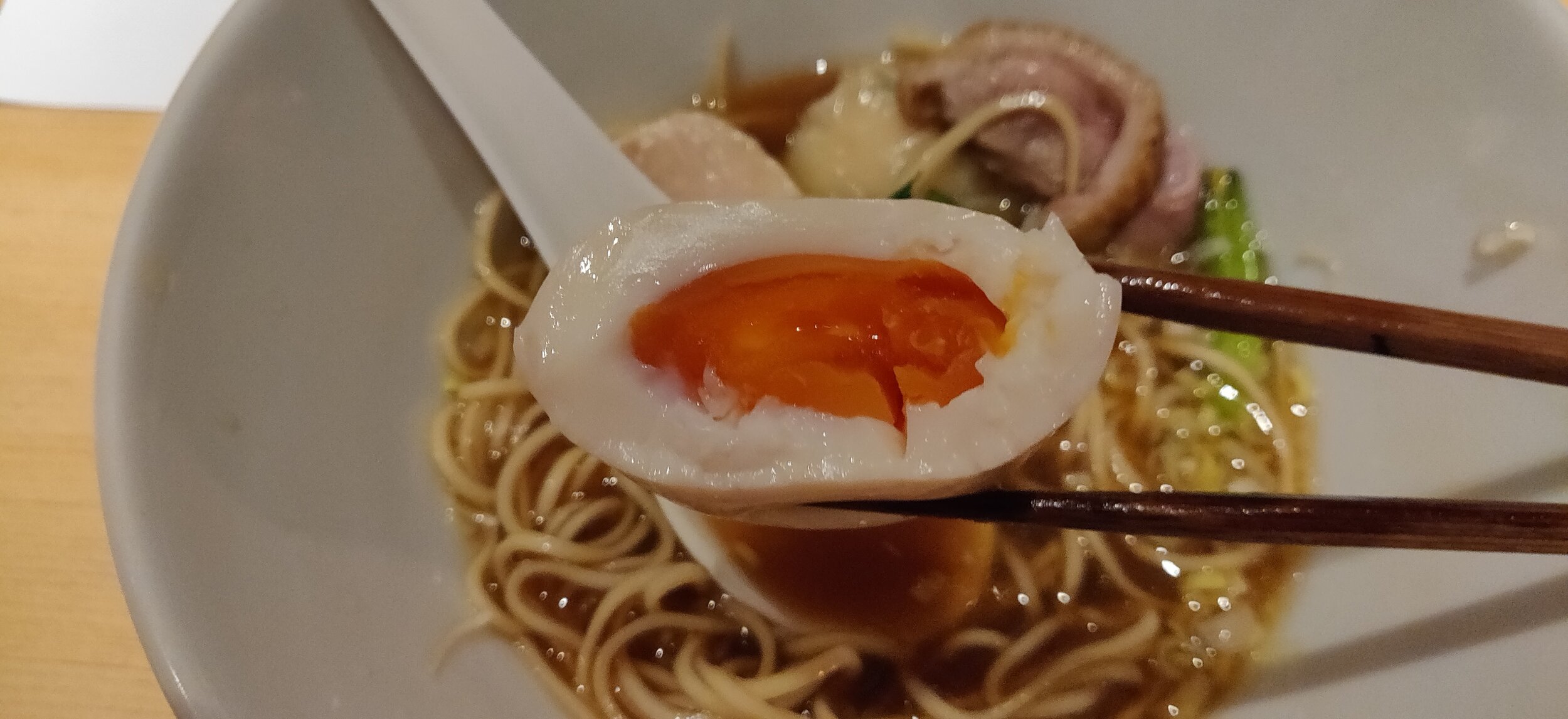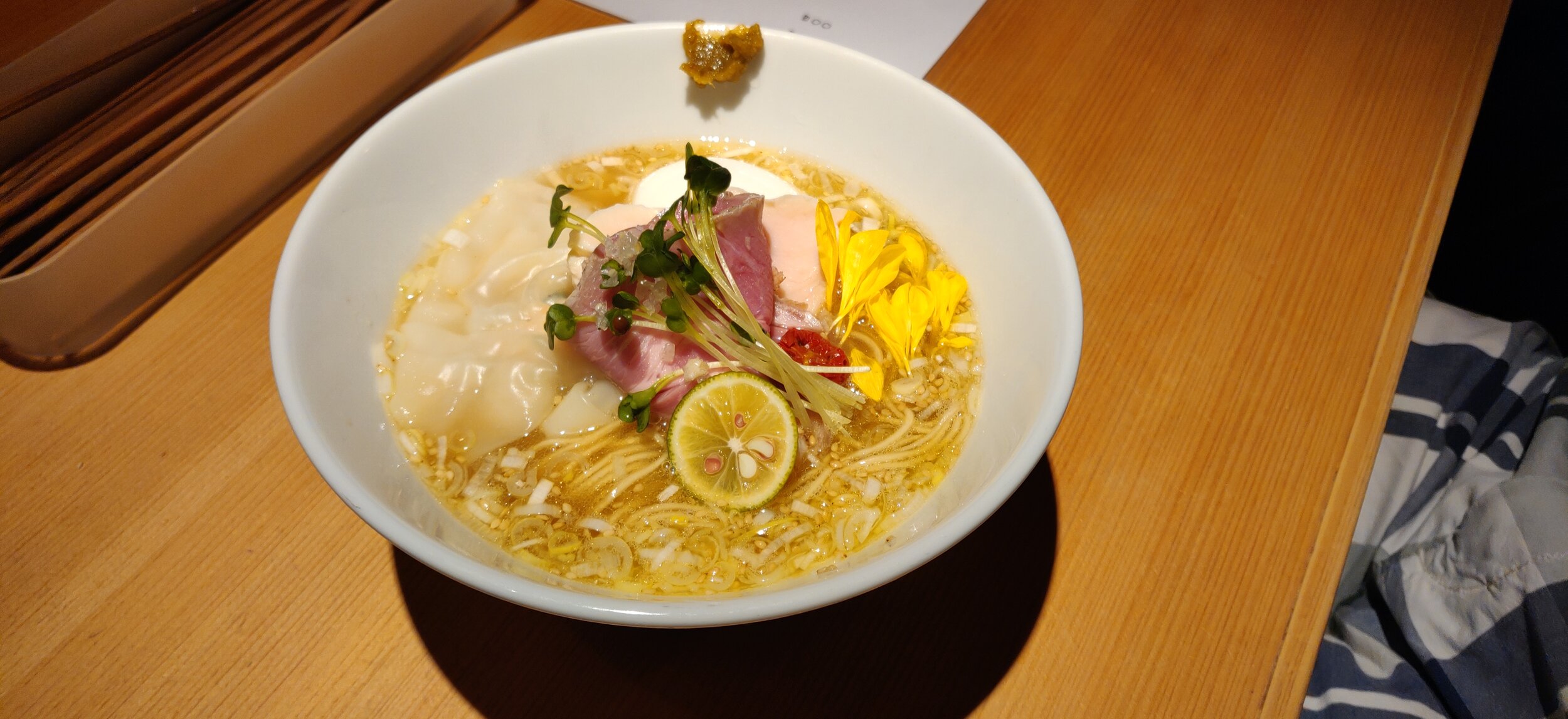Tori Soba Yamamoto (鶏そば 山もと); Yakitori Restaurant Turned Ramen Shop, Mitaka, Tokyo
In this old, unsuspecting building near Mitaka station on the Chuo Line resides an incredibly well known and highly regarded yakitori restaurant serving up some of the highest quality chicken Japan has to offer. Opened in 2015, Yakitori Yamaoto is a dinner only yakitori restaurant which has become the hot spot for modern, upscale yakitori in West Tokyo. However, as some of you may have noticed, my website revolves around ramen and I don’t typically write reviews about chicken bits on skewers. Well, thankfully for me, and to all the ramen fiends, Yakitori Yamamoto decided to open their restaurant up during lunch hours and used their extensive knowledge on Japanese chicken to create an incredibly delicious, fine dining, Tokyo style chicken Shoyu ramen that you’re not going to want to miss.
First off, the decor here is unlike any ramen restaurant, and why would it be as it’s really just a yakitori restaurant serving up ramen. I had to show off some of their interiors though as it was incredibly chic and elegantly designed. I wish more ramen restaurant would focus on their shop decor and feel like that’s something a lot has recently done as they strive for the illustrious Michelin Star, but nothing really has come to this level. The outside stone structures makes for a zen atmosphere while waiting for your seat and the clean counters circling the open kitchen allows for a dinner and a show allowing patrons to get a peek at the chef doing his work. In the back towards the bathroom is their selection of Japanese sake, and saying the restaurant has a collection would be an understatement. As you can see from the rows and rows of bottles, you definitely won’t run out of options in terms of alcohol choices. Unfortunately, the entire sake selection was not available during the lunch time, ramen service, but great to take a stroll through to see which you’d like to try when you inevitable come back for their dinner service.
Next up is the menu, which unfortunately is all in Japanese. As it’s still a relatively new ramen shop, they haven’t received the press and notoriety for an uptick in foreign clientele so they likely didn’t think they’d need one. Long time readers of this site will know, I won’t let you hanging on the menu so following is my translation. So the menu is stylized in a traditional Japanese restaurant style and reads from right to left. Starting on the right is their Tantan Men, or Dandan Noodles, with the Tokusei version directly to the left. Tokusei version of the Dandan Noodles include an extra pork char siu, blanched greens, a shrimp and chicken dumpling, as well as a soft boiled egg. Next up is the Shoyu Soba, or Shoyu Ramen, with the Tokusei version directly to its’ left. The tokusei version comes topped with a grilled duck, shoyu chicken char siu, soft boiled egg, and the chicken and shrimp dumpling. The regular version includes only the duck char siu with a chicken and shrimp wonton. Next is the Shio Soba, or Shio Ramen, with again, the Tokusei directly to its’ left. The regular version comes adorned with a salted chicken char siu and roast pork char siu, while the Tokusei version also comes with the chicken and shrimp won ton and soft boiled egg. Side menu includes the soft boiled egg, half portion rice, braised pork and hot spring egg over rice, minced chicken over rice, a rice porridge specifically for the Shio Ramen, and finally a beer appetizer set. For drinks we have draft beer, a lemon sour, and a higball (whiskey and soda). The glutton that I am, and since I had come with a fellow ramen fan, we decided to order one each of the Shio and Shoyu soba, with an order each of the braised pork over rice and minced chicken over rice.
So apologizes for the poor lighting on the photos, I was unfortunately sitting at the seat with the worst lighting of the restaurant. Regardless, pictured here is my Shoyu Soba, or Shoyu Ramen. You might be wondering why here, and a lot of other ramen restaurants, have been using the soba nomenclature for their dishes rather than ramen. From my understanding, a lot of ramen chef have been moving away from the ramen term as they believe it simplifies their dish. More and more restaurants have been trying to push themselves as chefs serving gourmet dishes, rather than a ramen shop serving up any old ramen. As you can see from the photo, it really is far from your traditional chicken shoyu ramen. Plating is absolutely gorgeous with the various, vibrant colors popping off of the white bowl canvas. I opted for the Tokusei version so my bowl was highlighted with the duck char siu, chicken char siu, soft boiled egg, blanched greens, and the plump chicken and shrimp won ton. Each topping is carefully places to show a bit of their presence on the bowl, without standing out as the focal point. Soup has the perfect bronze tint from the shoyu and the bubbles from the rendered chicken oils gleams with the light. The fried scallions hides the noodle gems beneath the soup with the char siu slices floating above so that they avoid overcooking from the residual heat of the soup.
So the soup here reflects an ongoing trend of ramen in Tokyo, known colloquially as “New Wave Tokyo Chicken Shoyu Ramen”. Some highlighting features of this style is the use of the highest quality chicken and shoyu for a simple, but refined broth and tare combination for the soup. As you might expect from a Yakitori, chicken specialty, restaurant their chicken broth was nothing short of phenomenal. As far as broths go, most will say Ramenya Toybox will reign supreme in this “New Wave” chicken ramen style, but I think Yamamoto will get the recognition it deserves once people come and taste this phenomenal soup. The chintan broth is delicately made so that no fat emulsion takes place, relying on the rendered chicken oils to provide that aspect to the bowl, resulting in a pure condensed version of itself. The dark shoyu has some ridiculously aromatic, buttery, nutty notes that engulfs your taste buds with every spoonful of soup. Pairing with the thin noodles with the crisp finish is heavenly and the wheat accents work well with the nutty soy sauce. Hydration, or kansui alkalinity levels, are perfect as it absorbs the optimal amount of soup for the slurp. Toppings here is what really brings it to another level from Toybox. It reminded me a bit of Motenashi Kuroki in which every piece was well thought out and balanced throughout the entire bowl. Duck was cooked with some char to bring a bit of smokiness to the dish while the chicken char siu had soy sauce flavoring to accentuate the theme of the dish. The blanched mustard greens had a great crunchy texture, cooking just enough to get the sweetness of the vegetable while taking out some of the earthiness it sometimes has. Fried scallions had that burnt aromas that enhance the rendered chicken oils floating above, bringing some great complexity to the soup. Only complaint maybe would have been with the wontons, which tasted great as is, but the shrimp brought some seafood flavors which I didn’t think meshed with the bowl. I definitely would have enjoyed them on the side with some beers however and is perfectly seasoned.
Before I could finish my bowl, out came my order of braised pork and hot spring style egg over rice. I wasn’t expecting too much from this as the restaurant specializes in chicken, but words can’t explain how delicious this rice bowl was. I could honestly leave happy getting a full serving of this bowl with how incredibly flavorful it was. What made this bowl rise above any pork bowl I’ve had from other restaurants was how flavorful the braise was. Typically most ramen restaurants will either cook them in with the soup and then marinate the cooked pork separately in a soy sauce tare seasoning, sometimes torching the outside to give it some char around the edges. Here, Yamamoto braised the pork in a king of soy sauce stew so that every piece is fall apart tender, melting with just the warmth of your palette. Hot spring style egg is difficult to explain, but is exactly what is pictured. It’s consistency is like a runny poached egg, but cooked in its shell. When the egg is cracked open, the shells reveal this slightly cooked whites, encasing a flowing yolk which covers the pork pieces adding decadent creaminess to the dish. The seasoning sauce is a sugary soy sauce, probably through an addition of mirin, or sweet Japanese sake, combining savoriness with sweetness for the ultimate flavor punch. The overwhelming flavors contrast to the fluffy white rice which absorbs the flavors and mellows the dish together. Really, just a fantastic side dish that you have to order for yourself.
As I mentioned earlier, I dined at Yamamoto with my good friend who ordered the Shio Soba, or Shio Ramen, and the Minced Chicken over rice dishes, both of which I got to sample from him. My review for this will be short, as I didn’t get to enjoy them to its’ entirety, but both were fantastic choices that I could easily have left satisfied ordering. I will say though, as biased as it sounds, the Shoyu Soba and Braised Pork over rice were definitely the superior choices. Anyways, as you can see, the Shio Soba is a stark contrast to the Shoyu Soba with different toppings creating different flavor profiles. The Shio is definitely more refreshing with hints of citrus from the sudachi slice and floral notes from the Chrysanthemum petals. A small, roasted tomato halve was placed above the noodles giving the bowl some acidity and the yuzu paste seen at the top of the bowl gave it a spicy kick. Char siu slices were different as well with the Shio coming adorned with roast pork with pinkish hues and a salted chicken breast. Won tons were the same as the Shoyu, but definitely worked better in this bowl as the saltiness of the soup definitely accentuated the seafood flavors of the shrimp. The raw sprouts was a nice touch giving the bowl some munch needed refreshing flavor notes while adding a bit of crisp texture to the dish. I really enjoyed all of the citrus notes from the sudachi slice and yuzu paste as it works well in a Shio soup. The flavors are quite common in Nabe, or Japanese hot pot, and every spoonful of soup left me satisfied, but not overly stuffed or bloated. My buddy’s rice dish of minced chicken over rice was the perfect combination of the skill set of the chef. Chicken is cooked to perfection akin to moist, flavor capsules bursting with every bite. Bits of dried seaweed sprinkled below the chicken, but above the rice added some roasted aromas, while the sprouts again gave it a refreshing palette cleanse before digging in for more. Main attraction here is definitely the orange sphere you see placed on the surface. What you’re seeing is a soy sauce cured egg yolk which will flow over the minced chicken whenever you decide to break it open. The matte finish comes from the salt of the soy sauce, giving it a rubbery texture on the outside, but the runny yolk hides within giving a mellow creaminess to the bowl. While I loved my braised pork over rice, the egg yolk here alone almost made me wish I had ordered this instead. The ingenuity to make this yolk stems from the chefs and restaurant’s background as a chicken specialty, yakitori restaurant and it made me feel like I got a sneak preview of what dinner service is like.
Tori Soba Yamamoto is by far one of my favorite ramen restaurants to open in 2019 and I expect great things for it this coming year in 2020. While they haven’t received much notoriety among food publications, it won’t be long before word gets out about this amazing shop. What I love with ramen shops these days is their pride and standard to excel as a restaurant, not just as a ramen shop. The pride and hard work done to provide this experience to guests is top notch and not one to be simplified purely on the genre of the dish itself. Each component is carefully structured in a way that presents itself as a complete and masterful piece of art and should be appreciated as such. If you’re looking for a fine dining experience which just so happens to serve ramen, please give this place a visit. I almost guarantee you’ll leave happy that you did…unless of course, you’re not a fan of chicken.

